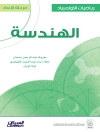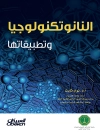Boost student success by reversing your perspective on college readiness
The national conversation asking ‘Are students college-ready?’ concentrates on numerous factors that are beyond higher education’s control. Becoming a Student-Ready College flips the college readiness conversation to provide a new perspective on creating institutional value and facilitating student success. Instead of focusing on student preparedness for college (or lack thereof), this book asks the more pragmatic question of what are colleges and universities doing to prepare for the students who are entering their institutions? What must change in an institution’s policies, practices, and culture in order to be student-ready?
Clear and concise, this book is packed with insightful discussion and practical strategies for achieving your ambitious student success goals. These ideas for redesigning practices and policies provide more than food for thought–they offer a real-world framework for real institutional change. You’ll learn:
* How educators can acknowledge their own biases and assumptions about underserved students in order to allow for change
* New ways to advance student learning and success
* How to develop and value student assets and social capital
* Strategies and approaches for creating a new student-focused culture of leadership at every level
To truly become student-ready, educators must make difficult decisions, face the pressures of accountability, and address their preconceived notions about student success head-on. Becoming a Student-Ready College provides a reality check based on today’s higher education environment.
Cuprins
Preface xi
About the Authors xiii
About AAC&U xvii
Acknowledgments xix
Chapter One: In Search of the Student-Ready College 1
A New Concept: Student-Ready Colleges 8
The Quest for College-Ready Students: A Historical Perspective 9
A Profile of the 21st-Century Student 14
Serving Students? Responding to Markets? Competing Tensions in Higher Education 21
The Path Forward: Taking Steps to Transformation 24
Chapter Two: Leadership Values and Organizational Culture 25
Perspective Taking 29
New Directions for Leadership 31
Changing Perspective on Educators 35
Does Collaboration Serve a Greater Good or Is It an End in Itself? 36
Collaborative Leadership for Grassroots Empowerment 38
Every Employee an Educator 39
Inclusive Professional Development 40
Exemplary Practice:The University of Wisconsin-Whitewater 41
Exemplary Practice: California State University, Fullerton 43
Positive Vision of Educators 44
Building Out the Change Effort 46
Considering Whole-Person Educators 47
Student-Ready Mentoring 48
The Will to Apply and Practice What Works 49
Student-Ready Practice of Governance 51
Exemplary Practice: Alverno College 53
Beyond Change as a Motivator in Itself 56
A Pragmatic Approach to Shared Governance 58
A Vision of a Place Ready for Students 60
Conclusion: A Vision to Guide Collaboration 69
Chapter Three: Making Excellence Inclusive to Support Student Success 71
Making Excellence Inclusive 77
Removing Systemic Barriers and Challenges for Students 77
A Caring Educator 80
Embracing a Paradigm Shift 82
A Culture of Inclusion 87
Defining Student Success as Learning 89
Promoting Excellence in Student Engagement 91
Charting Your Course of Action 95
Conclusion 96
Chapter Four: Building Student Readiness through Effective Partnerships 97
Engaging the Ecosystem 102
A New Survival Instinct:The Opportunistic Self-Awareness of Student-Ready Colleges 106
The Many Faces of Partnership 112
Student-Centered Symbiosis in Support of Today’s College Students 118
Selecting Effective Partners 124
Questions to Ask as You Consider Partnerships to Support Student Success 127
Conclusion 128
Chapter Five: Demonstrating Belief in Students 129
Belief in Student Capacity to Learn as a Genuine and Public Commitment 134
Challenges to Belief in Student Capacity to Learn 139
A Learning-Centered Campus Designed for All
Students to Flourish 150
Conclusion 154
Conclusion 155
References 161
Index 179
Despre autor
TIA BROWN MCNAIR is the vice president for diversity, equity, and student success at the Association of American Colleges & Universities (AAC&U).
SUSAN ALBERTINE is senior scholar for faculty at the Association of American Colleges & Universities (AAC&U).
MICHELLE ASHA COOPER is the president of the Institute for Higher Education Policy.
NICOLE MCDONALD is a strategy officer at Lumina Foundation.
THOMAS MAJOR, JR. is corporate counsel at Lumina Foundation.
American Association for Colleges & Universities (AAC&U) is the leading national association concerned with the quality, vitality, and public standing of undergraduate liberal education. Its members are committed to extending the advantages of a liberal education to all students, regardless of academic specialization or intended career. Founded in 1915, AAC&U now comprises more than 1, 300 member institutions–including accredited public and private colleges, community colleges, research universities, and comprehensive universities of every type and size.












